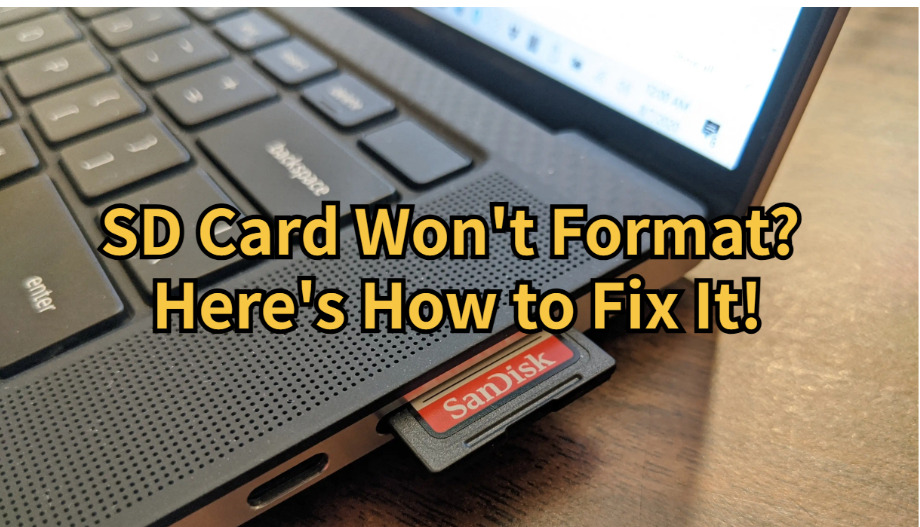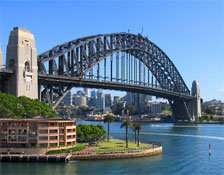H1: SD Card Won’t Format? Here’s How to Fix It!
You just got a new memory card, and full of eagerness to use it right away you try to format it. Or perhaps you’re looking forward to freeing up some space on an old SD card. But in both cases, your SD card won’t format.
In fact, no matter on what device you try to format it, be it on camera, phone, or PC it leaves you wondering, “Why won’t my SD card format?” How exasperating that can be? Don’t worry, though. In this complete guide, we’ll describe possible causes of this memory card formatting issue, along with 7 step-by-step solutions to resolve it.
Part 1: Why Can’t I Format My SD Card?
There are many reasons for this common issue. But they’re usually divided into two categories such as logical errors and hardware malfunctions:
- Logical Errors:
- Your SD card has been infected by a virus, especially if you’re used to connecting it to different devices.
- Your memory card’s file system might be damaged or incompatible with the operating system.
- Hardware Malfunctions:
- The physical read/write switch on your memory card is turned on.
- Bad Sectors on your memory card can cause corruption.
- Your SD card can wear out after repeated write-and-erase cycles.
Part 2: How to Recover Data From Inaccessible/Unreadable SD Card?
Once you try to fix the SD card won’t format error, you might need to format your card, which will lead to losing all files on it. Thus, to avoid it, you must first retrieve all files from your memory card. This is where data recovery software comes in.
4DDiG Data Recovery can assist you in this task. It can reclaim all files from various internal/external storage devices e.g. SD card and data loss situations. Here are some benefits of using this tool:
- Can reclaim data from any brand of SD card.
- Can retrieve 1000+ file types that include documents, audio, videos, images, archives, and so forth.
- It allows you to scan specific file types and offers a free preview of recovered data.
- It offers two modes for superficial and deep scanning.
- It provides a high recovery rate and a clean, simple interface.
Here’s how to use this tool to regain data from inaccessible/unreadable memory card:
Step 1: Download, and install SD card recovery tool on your computer. Then, execute it plug in your inaccessible memory card to same PC. Pick “SD Card” from left.
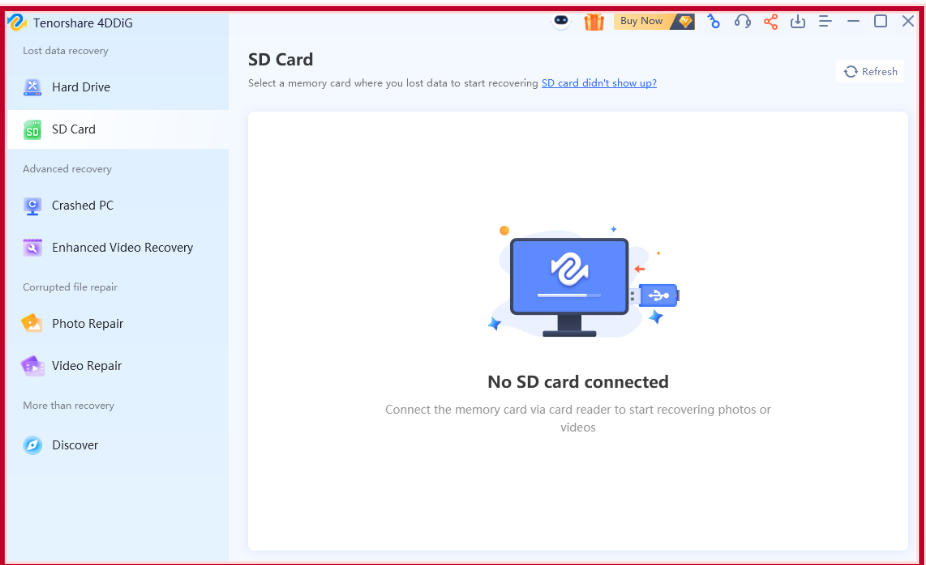
Step 2: Choose file types to scan. Hit “Scan Selected File Types.”
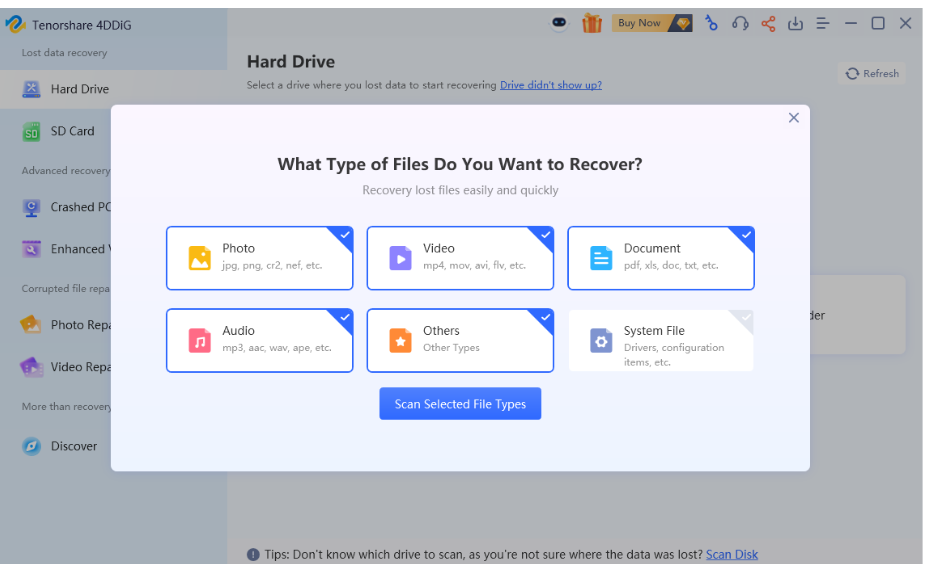
Step 3: The tool will scan card for recoverable files. You can pause or stop scanning, once it reclaims your desired files.
Step 3: Preview recovered files beneath “Tree View” or “File View,” Then, tap “Recover” to shift them to a secure place.
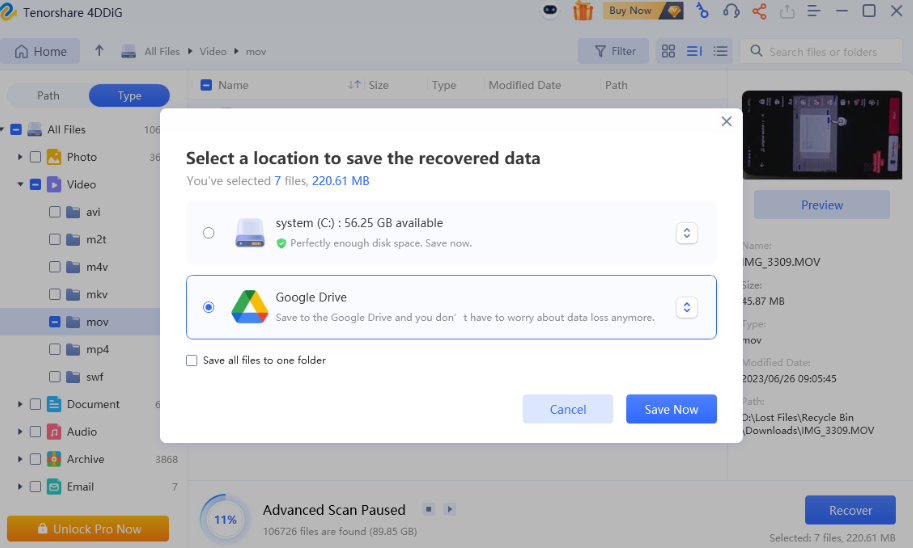
Part 3: How Do I Fix SD Card Won’t Format Error?
When your SD card won’t format on Android or a camera then, you must first, examine compatibility of your card’s format with the device you’re using. Afterward, proceed to advanced solutions like repairing logical errors and formatting your memory card:
Fix 1. Check SD Card Format
It’s important to check whether the memory card you’re using is compatible with your camera specs. Otherwise, incompatibility might be the cause of ‘SD card won’t format in camera.’ SD cards indeed come in different types, each with specific storage limits: SD (basic storage), SDHC (higher storage), and SDXC (highest storage). Thus, before formatting, make certain to check your camera’s manual to know if it supports the card type you’re using.
Fix 2. Use Disk Management
After you switch to a compatible card, if you still face ‘Windows can’t format SD card’ problem, then use Disk Management to format it. A built-in Windows tool, it supports creating and deleting partitions and more. Here’s how to use Disk Management to resolve ‘SD card won’t format on Android or camera’ error:
Step 1: Plug in your inaccessible SD card to your computer. Then, right-click “Start.”
Step 2: Pick “Disk Management.” Right-click SD card that’s giving you error. Tap “Format.”
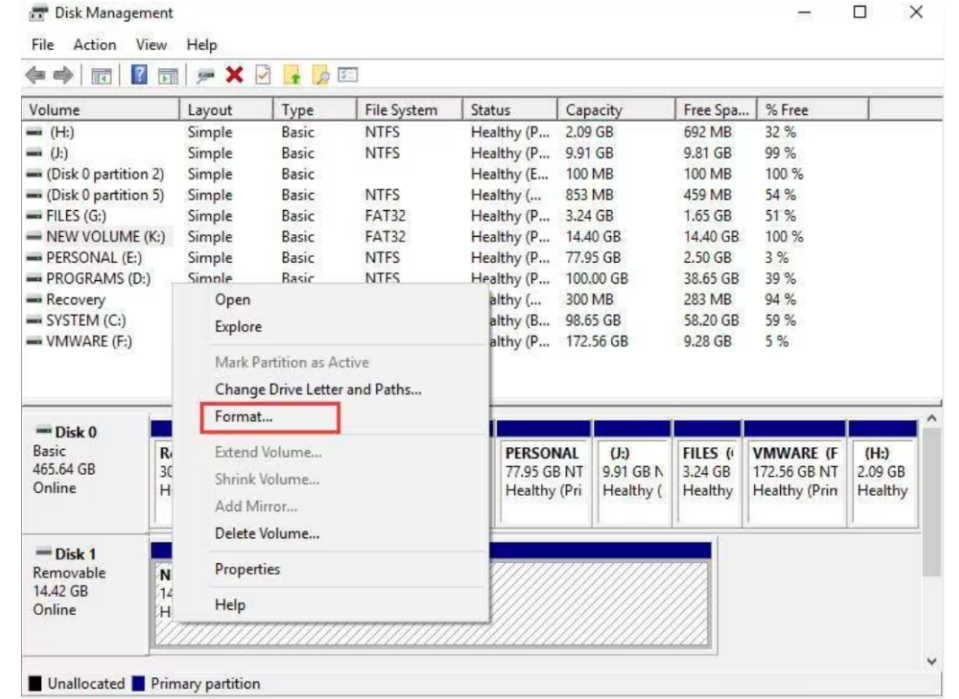
Step 3: Give a value to “Volume label,” “File system,” and “Allocation unit size.” Hit “OK.”
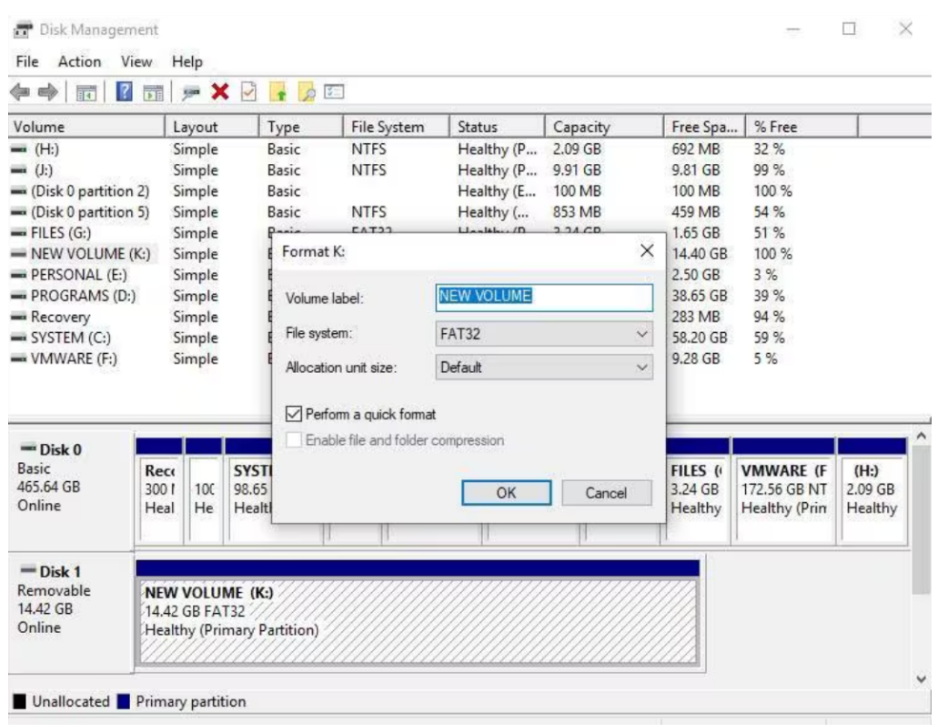
Step 4: By default, you’ll find, that “Perform a quick format” is selected. Uuncheck if you prefer a full format. Hit “OK.”
Fix 3. Turn Off Physical Lock Switch
Many cards have a small read/write switch on left side, which when locked can trigger write protection leading to ‘Micro SD card won’t format’ error. You can unlock it. But first, eject card from your camera or Android device and then move it to unlock (top) position.
Fix 4: Remove Write Protection by Diskpart
Your ‘SD card won’t format’ if read-write protection is software-based, even if it is physically unlocked. To remove it, utilize Diskpart. It’s also a Windows built-in tool that can modify attributes of storage devices, clearing read-only protection. Here’s how to remove write-protection on a card by Diskpart to fix ‘Micro SD card won’t format’ issue:
Step 1: Plug in your memory card to a computer. Next, press and hold “Windows + R” keys and release them when they execute “Run” box.
Step 2: Type “diskpart.” Hit “Enter.”
Step 3: Input following commands. Press “Enter” after each one:
- list disk.(This will display all connected devices including your SD card).
- select disk 1. (Here replace 1 with SD card’s disk number).
- attributes disk clear read-only. (This command will clear away read-only attributes from your memory card.
Step 4: Once you see “Diskpart attributes cleared successfully,” close window.
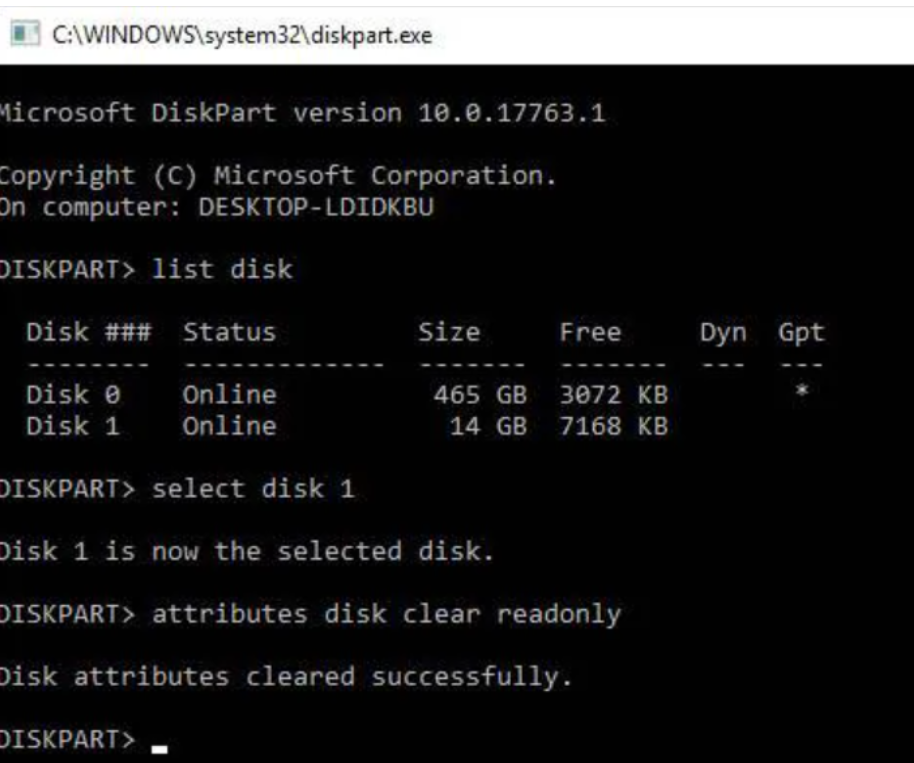
Fix 5: Use SD Card Memory Formatter
Still searching for ‘Windows was unable to complete the format SD card’ on Google? While Disk Management can format SD, SDHC, and SDXC cards, it may not optimize performance for these specific types.
For better control, use SD Card Formatter, which is designed to format SD, SDHC, and SDXC cards according to SD Association’s specifications. This tool also preserves a memory card’s “Protected Area” used for security, which Disk Management doesn’t. Follow steps below to use SD Card Formatter to fix ‘Windows can’t format SD card’ issue:
Step 1: Download and install latest Memory Card Formatter from SD Association’s website. Then, execute it on your computer. Pick your memory card.
Step 2: Choose “Quick format. Or pick “Overwrite format.” Set a “Volume label.” Hit “Format.”
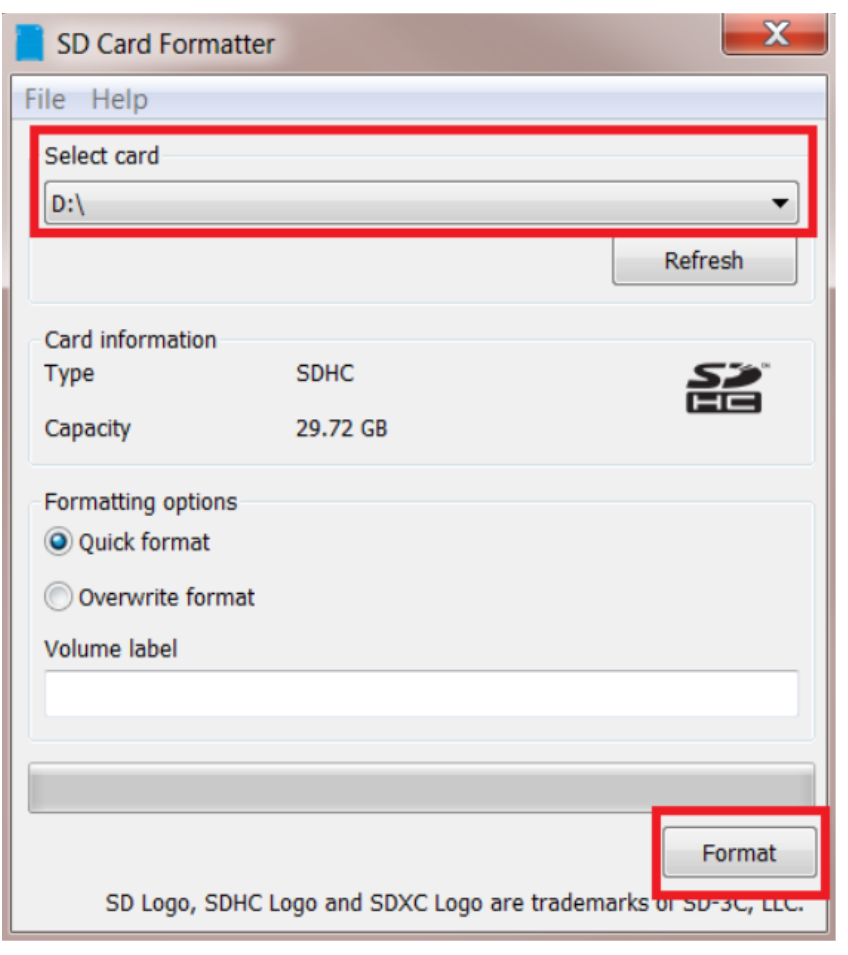
Fix 6: Repair Logical Errors on SD Card
Logical errors like file system corruption and bad sectors can also lead to an error such as ‘Micro SD card won’t format.’ CHKDSK-an inbuilt utility in Windows can repair a corrupted file system. It can also correct cross-linked files, recover lost clusters, and mark bad sectors as unusable to prevent data loss and improve drive stability. Here’s how to use CHKDSK to repair logical errors if ‘Windows can’t format SD card:’
Step 1: Type “cmd” in “Windows search box.” Then, execute “Command Prompt.”
Step 2: Input following command. Hit “Enter” afterward:
- chkdsk g: /f /r /x. (Here replace g with drive letter of your SD card).

Fix 7: Purchase a New SD Card
In the event, you’re unable to fix ‘SD card won’t format in camera or Android,’ it could be that your card is physically damaged, precisely its NAND memory has worn out. Due to wear and tear, NAND flash memory degrades over time with repeated use.
As this happens, the card’s controller may activate write protection on your memory card and make it read-only to prevent further data loss. Once in this state, the hardware damage is irreversible, meaning you’ll likely need to purchase a new SD card.
Conclusion
Most probably we were able to resolve your query, “Why won’t my SD card format, and how to fix it?” If your SD card won’t format because of some logical or hardware faults then, try troubleshooting steps, mentioned in this complete guide. But before you apply any solution, use 4DDiG Data Recovery to reclaim any necessary files you may have on your memory card. So that, you don’t lose your valuable data items.







